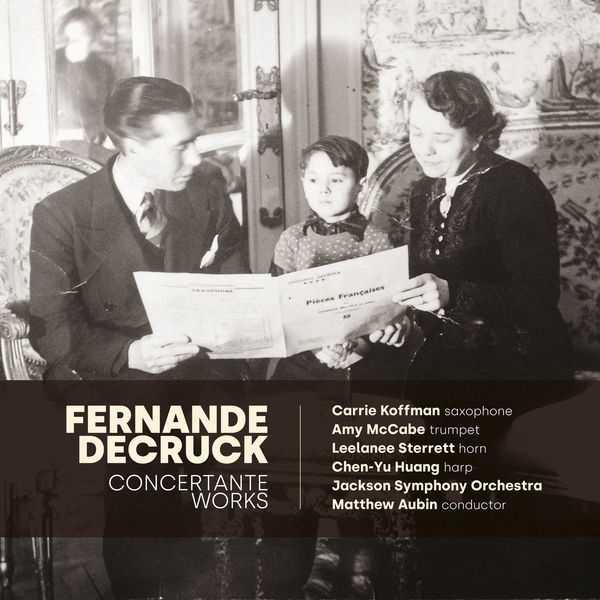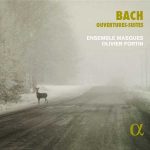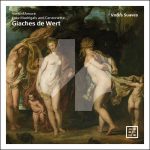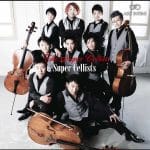

Composer: Fernande Decruck
Performer: Carrie Koffman, Leelanee Sterrett, Amy McCabe, Chen-Yu Huang
Orchestra: Jackson Symphony Orchestra
Conductor: Matthew Aubin
Format: FLAC (tracks)
Label: Claves
Release: 2022
Size: 1.55 GB
Recovery: +3%
Scan: yes
Sonate en ut dièse pour saxophone (ou alto) et orchestre
01. I. Très modéré
02. II. Noël
03. III. Fileuse
04. IV. Nocturne et Rondel
Poème Héroïque pour trompette solo en ut, cor solo en fa et orchestre
05. I. Moderato
06. II. Andante espressivo
07. III. Final
Concerto pour harpe et orchestre
08. I. Modéré, sans lenteur
09. II. Andante
10. III. Très vif et léger
11. IV. Final. Allegro molto
The Sonata in C-sharp for alto saxophone (or viola) is Decruck’s best-known work. Decruck created two versions of her world-famous sonata, one with saxophone or viola and piano, the other with full orchestral accompaniment. The latter version is rarely heard. Decruck combines the classical sonata form with impressionistic harmony and, at times, polytonality. Decruck dedicated this work to Marcel Mule, the world-renowned French saxophonist. Athough Mule had countless compositions written for him in his lifetime, he took the time to record the Fileuse movement of the Sonata.
The first movement begins mysteriously in the orchestra before unfolding to a pastoral melody featuring the soloist and orchestra in dialogue. The second movement, Noël, references Noël Nouvelet (“Christmas Comes Anew”), a traditional French carol and is infused with melancholy. Fileuse features the saxophonist performing virtuosic passage work and takes the traditional place of the Scherzo. The finale is structured in two parts. The Nocturne again has a mysterious feel while also evoking a funeral march before transitioning to the Rondel section, which brings the work to a heroic close.
Written in 1946, Poème héroïque is a double concerto for solo trumpet, solo horn and orchestra. The work often features the two solo instruments in imitation and is a fantastic example of Decruck’s mature style. Divided into 3 contrasting movements, the piece sounds more American and Neo-Romantic than French. At times, it can sound mysterious and ethereal. Other sections have a driving, perpetual motion character. Decruck experiments using contrasting time signatures like 24/16 and 2/4. Whether the work was ever performed or who it was written for is unknown. Decruck moved to Marblehead, Massachusetts, the following year. In 1948, she created a reduction of the work for solo trumpet and piano. This version was written for Roger Voisin, the famous French principal trumpet of the Boston Symphony Orchestra.
The Concerto pour harpe et orchestre was dedicated to and premiered by French harpist and pedagogue Pierre Jamet in 1946. Jamet later became the harp professor at the Paris Conservatoire in 1948. Decruck’s Concerto shares similarities with Germaine Tailleferre’s Sonate pour harpe. It is a concertino in style, light-hearted, warm, and full of surprises. At the premiere performance by Concerts Colonne, the critic Henry Malherbe commented that the Concerto was “a work of lively and delicate feeling. A renowned harpist, Pierre Jamet, has carved out a great success”. Decruck must not have been fully satisfied, though. In her definitive score, she states that the original fourth movement, a fughetta, should be suppressed. The present recording respects her wishes.



